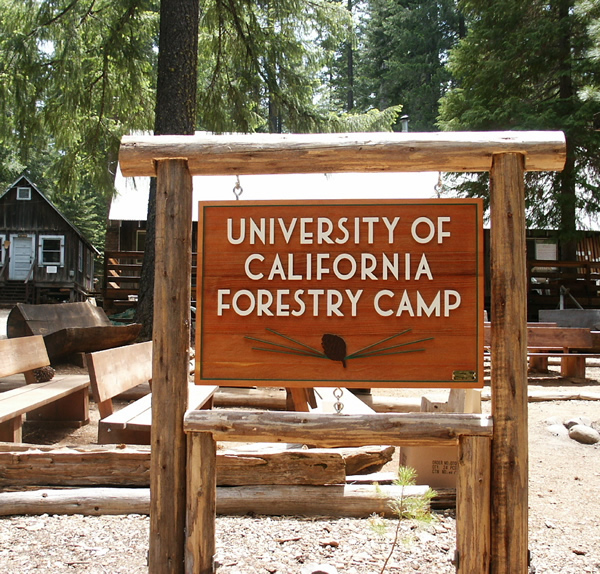Camp signs are more than pieces of wood or metal perched along trails and campsites. They are vital navigational tools, conduits of important information, and sometimes, they embody the spirit of the camping experience itself. Understanding the varied purposes and designs of camp signs is essential for any outdoor enthusiast.
Signage in the Wilderness: An Overview
The Role of Camp Signs
Camp signs serve several critical functions, from guiding campers to safety to protecting natural resources. They help manage the flow of foot traffic and maintain the order and serenity of the camping environment.
Types of Camp Signs You Will Encounter
From directional arrows to informational placards, various signs populate our parks and campsites. Identifying these signs and understanding their messages is key for a safe and enjoyable outdoor experience.

Designing Effective Camp Signs
Crafting Signs for Maximum Visibility
Camp signs must be crafted to stand out against the backdrop of nature. Learn about the principles of effective sign design, including the use of colors, symbols, and materials that can withstand the elements.
Balancing Aesthetics and Functionality
While camp signs have a job to do, they can also aesthetically complement their natural surroundings. This section explores how the design of camp signs can strike a balance between being eye-catching and harmonious with the environment.
Creating Camp Signs for Your Site
DIY Sign Creation: A Personal Touch
For campsite owners or those with a private camping spot, creating personalized camp signs adds a welcoming touch. Get tips on materials, tools, and techniques for making your own durable and distinctive camp signs.
Complying with Regulations and Best Practices
It’s essential to align with any local or federal guidelines when placing signs in public outdoor areas. Highlight the importance of understanding and following these regulations to protect both the environment and the people who enjoy it.

The Use of Camp Signs in Safety and Conservation
Wayfinding: A Lifeline in the Outdoors
The most critical function of camp signs is to aid in navigation. Analyze how signs are used to mark trails, indicate distances, and provide warnings about potential hazards.
Protecting Wildlife and Flora
Camp signs also play an important role in conservation efforts. Discuss how signage is used to inform campers about sensitive habitats, endangered species, and rules for interacting with the environment.
The Story Behind Historical and Commemorative Camp Signs
Signs That Tell a Story
Some camp signs have historical significance, marking locations of past events or denoting landmarks. These signs connect campers to the rich history of the land and the footsteps of those who walked it before.
Memorializing Moments and Milestones
Commemorative signs at campsites can memorialize individuals, achievements, or significant events. Explore the impact of these markers on the collective memory and community spirit of campers and hikers.

Maintaining and Preserving Camp Signs
Routine Sign Checks and Upkeep
Regular maintenance of camp signs is essential for ensuring their continued effectiveness. Share best practices for inspecting signs for damage, performing needed repairs, and replacing signs when necessary.
The Challenge of Vandalism and Natural Decay
Camp signs are vulnerable to vandalism and the wear and tear of harsh weather conditions. Discuss strategies for protecting these important guides, including the use of vandal-resistant materials and community policing.
Camp Sign Etiquette: Respect and Responsibility
The Dos and Don’ts for Campers
Proper interaction with camp signs is part of good outdoor etiquette. Emphasize the responsibilities of campers to leave signs untouched, report damage, and follow the guidance they provide.
Educating Future Generations
For camping to remain a revered tradition, educating the younger generation on the importance of camp signs is crucial. Offer insights into incorporating camp sign etiquette into education for youth groups and new campers.
Directing the Way with Clarity and Consistency
The clarity of camp signs cannot be understated. Each one is a beacon of safety, guiding the way with symbols and words that have become the universal language of outdoor navigation. Trailhead markers, distance posts, and directional signs must all speak this language fluently.
Consistency Across Parks and Trails
Consistency in signage allows for a seamless transition from one park to another. Campers and hikers find reassurance in familiar symbols and sign styles, which reduces confusion and enhances the overall experience.

In the Workshop: The Craft of Sign Making
Using Durable Materials for Longevity
The craft of making camp signs is a lesson in durability. Materials such as treated wood, weather-resistant metals, and high-grade plastics ensure that signs can endure through seasons of sun, rain, snow, and wind.
The Tools and Skills Required
Sign making utilizes a range of tools from saws for timber to engraving implements for detail work. It’s a craft that combines carpentry with artistry, demanding both skill and a careful hand.
Signage as a Tool for Environmental Stewardship
Educating Campers Through Signage
Effective environmental stewardship begins with education. Camp signs are teaching tools, conveying messages of conservation and wildlife protection. Educative signs may depict local species, highlight restoration areas, or explain the impact of human activity on delicate ecosystems.
Enlisting Public Support for Conservation Efforts
Camp signs can also act as rallying points for conservation efforts. They often encourage campers to become involved, whether through donations, volunteer work, or simply spreading the message of protection and respect for the environment.
The Enduring Legacy of Camp Signs
Celebrating the Timelessness of Signs
Many park signs have stood as historical testaments, marking the passage of time. These enduring symbols become part of the storytelling tapestry woven into the park’s fabric, paying homage to its legacy and lore.
Preserving Stories for Future Generations
As protectors of history, camp signs preserve stories for future generations, ensuring that the legacy behind each landmark or trail name lives on. They invite campers to become part of the narrative, to add their footsteps to the ancient paths marked by these steadfast guides.
Embracing Sign Etiquette: A Camper’s Responsibility
Reports and Repairs: The Importance of Vigilance
Campers play a crucial role in the upkeep of signs. Vigilance in reporting damaged or defaced signage helps park staff undertake timely repairs, which in turn maintains a safe and informative environment for all.
Instilling a Sense of Stewardship
An ethos of care and stewardship is the mark of a responsible camper. Respecting signs, not as mere pointers but as guardians of the wild, fosters a culture of care that ensures the enduring splendor of our shared natural spaces.

The Future of Signage in Our Campgrounds
Innovating for Impact: The Next Generation of Signs
Innovation in materials and technology promises to evolve the nature of camp signs. Imagining signs that harness sustainable energy, provide digital interactivity, or even change messages according to conditions is not far from reality.
The Interplay of Tradition and Technology
Even as we look to the future, the charm of traditional signs remains undeniable. The interplay of time-honored tradition with emerging technology represents the next chapter in the story of camp signage.
Conclusion: Signposts to Adventure and Preservation
An Essential Aspect of Camping Culture
Camp signs are intrinsic to the fabric of camping culture. They provide direction, ensure safety, and add character to the natural landscapes we explore.
A Collective Effort to Honor and Uphold
Recognizing the value of camp signs is a collective duty. By respecting and upholding the integrity of these markers, we ensure the legacy of safe and conscious exploration for all who follow the trails.
